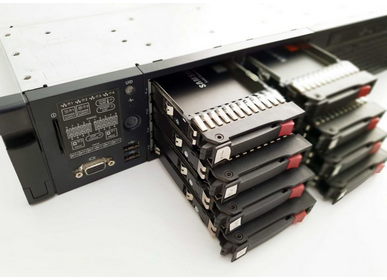
Many individuals have heard about RAID but may not understand exactly what it is or why it can be useful. RAID means Redundant Array of Independent Disks, and it is really a data storage technique that combines multiple hard disks into one logical unit. The goal of using RAID is to improve performance, increase reliability, and recover data in case there is drive failure. In this information, we'll discuss the various kinds of RAID and what type is most beneficial for data recovery service.
Types of RAIDs
RAID will come in several different configurations, each offering unique benefits. However, you can find four main types which can be most commonly used today: RAID 0, 1, 5, and 6.
RAID 0: This sort combines two or more drives right into a single unit but does not provide any redundancy or fault tolerance features. It gives the greatest read/write speeds but provides no protection against drive failure or data loss. If one drive fails, you will lose all the information on both drives.
RAID 1: This sort creates a reflection image of two drives so that the same information is stored on both drives simultaneously. If one drive fails, one other may be used as a copy as you replace the failed drive. This type offers excellent fault tolerance and good read/write speeds but requires twice as much storage area as an individual drive would offer.
RAID 5: This type uses three or maybe more drives to store data with parity information distributed across all disks to be able to drive back single-disk failures. It gives better performance than RAID 1 but requires more disks and more complex setup procedures than other kinds do.
RAID 6: This sort is similar to RAID 5 but adds an additional parity block to provide extra protection from disk failures. In addition, it allows up to two disks to fail before any data is lost, rendering it a great solution for mission-critical applications where data integrity is paramount.
Conclusion:
Whenever choosing which form of RAID configuration is better to your requirements, there are numerous factors to consider such as cost, performance requirements, storage capacity requirements, and fault tolerance needs. Like, if you need maximum protection against disk failure then RAID 6 would be your very best option since it are designed for up to two disk failures without the data loss occurring; however if you need maximum performance then RAID 0 could be your absolute best bet since it has the greatest read/write speeds but offers no fault tolerance features whatsoever – meaning that when only one disk fails then your entire stored information will undoubtedly be lost forever! Ultimately it's important to evaluate every individual situation carefully prior to making a choice about which configuration will continue to work best for you personally and your specific needs as it pertains to recovering lost data from failed hard disk drives!
It's also very important to website owners who want their websites to do well on search engine result pages (SERPs) to work with SEO techniques to be able to increase their chances of success online! Doing so will help them gain higher rankings within SERPs so that they may capture more traffic organically without having to rely heavily on paid advertising methods such as for example Google Ads or Facebook Ads! Ultimately SEO should form an intrinsic section of any digital marketing strategy because it gives a fruitful method for businesses to achieve their target audiences online without spending considerable amounts on paid advertising platforms!
No comments:
Post a Comment